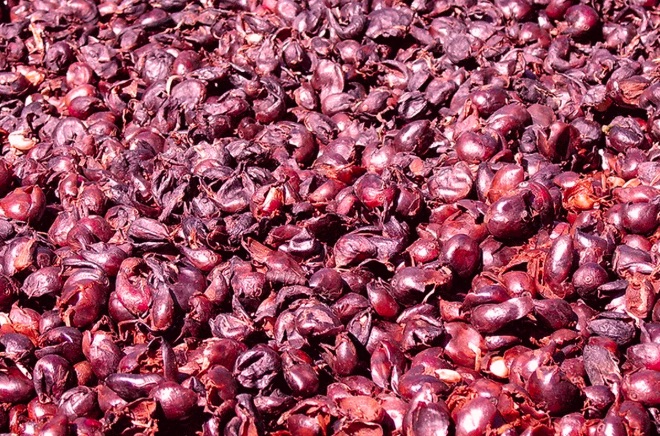Coffee bean husks, chicken paws, and hog snouts all have something in common.
Each helped us become more efficient.
This is the story…
Coffee Bean Husks
No one had ever paid much attention to the skin around the coffee bean. Trashed or used as fertilizer, it was worthless. But then as “legend” has it, a farmer in El Salvador got an appealing whiff of some husks that were drying in the sun. She steeped them in water, liked the taste, and the rest is history.
Called cascara, the syrup from the husk is flavoring new drinks from Starbucks, Stumptown Coffee Roasters, and Blue Bottle Coffee. At Starbucks you can order an iced cappuccino with cascara foam while Blue Bottle has a Cascara Fizz soda. Meanwhile, back at the farm, the husks have become a bonanza. At $7 a pound. they are selling for six times the price of coffee beans.
Chicken Paws
With chickens, we could say the paw was like the husk. For this story, we need to rewind to the 1990s. At that time, U.S. consumers were eating the breasts, the thighs, and the drumsticks but not the paws. At best, they were sold in dog food. But then, producers realized that Chinese paw consumption could be “bottomless.” A Perdue executive said he wished they could sell more but their supply was limited by the demand for the rest of the chicken. Still though, from nothing, paws had become a major source of profit.
Hog Snouts
The third item that we can add to our list of profitable byproducts is pig snouts and other pork varietal meats. Like chicken farmers, the people who sell hog parts appreciate the snouts, the livers, stomachs, tongues…you get the picture…that the Chinese buy from us. More recently, U.S. meat scientists even figured out how to use jowl meat for a high protein low cost bacon product. Unpopular in the U.S., those parts of the pig have been called “the hidden pork value.”
Our Bottom Line: Economic Efficiency
You can see that by using coffee bean husks, chicken paws, and hog snouts, we are boosting what our land, labor and capital will produce. Or, as an economist would say, we’ve increased our economic efficiency by optimally using our resources.
(You can also see again how trade is a win win but we will return there during another day.)
My sources and more: Yesterday, hearing an Illinois farmer explain China’s demand for hog snouts, I remembered Bloomberg’s cascara article and the Freakonomics chicken paws story. And after that, I learned about hog jowl innovation from The National Hog Farmer. However, if you want the most interesting read, do go to Fresh Cup for its description of cascara. Finally, I did want to note that while cascara is new in the U.S., Eater (the source of our featured cascara image) says it has been a “culinary staple” in Yemen and Bolivia for centuries. It is always so nice when the ideas in seemingly different stories converge.







According to https://www.tridge.com/products/chicken-feet , the United states already produces 18.7 million metric tons of chicken feet and is the no. 1 producer of it, second only to Brazil. I had no idea it was such a widely popular food.